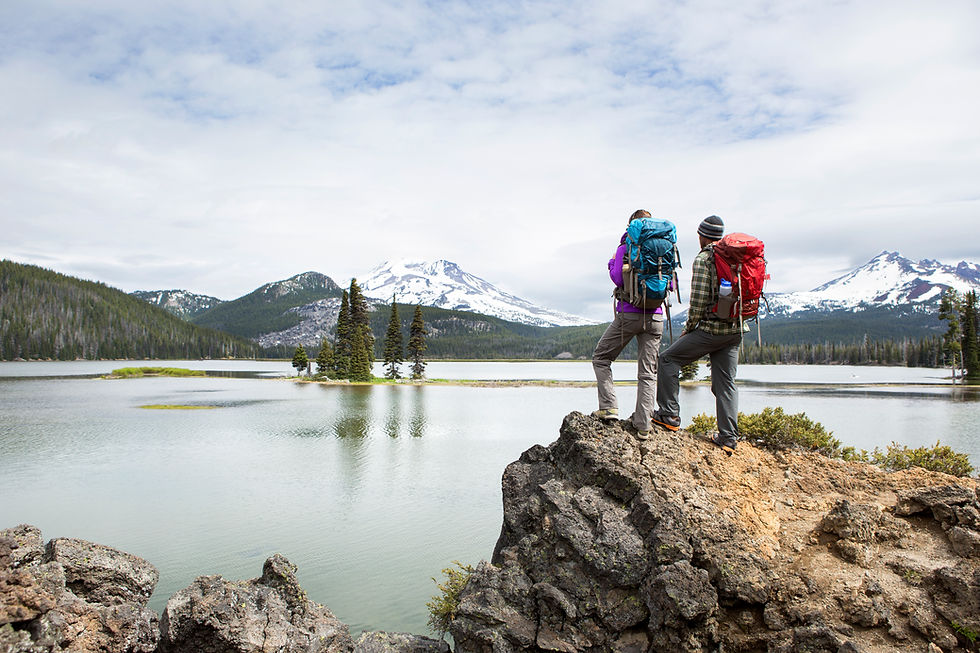Starting the Field Season in the Wake of Quarantine Measures
- Diana M. Benz, Ph.D.
- Mar 21, 2020
- 3 min read
Updated: Apr 1, 2020
As the planning for 2020 mineral exploration season begins to ramp up in British Columbia it's also time to take a look at our Exposure Control Plans and Business Continuity Plans: how to continue doing business in the wake of quarantine measures and how to protect local communities.

Some field camps recommend certain vaccinations prior to an employees start date due to the risk of exposure to some communicable diseases within that region. One example is the requirement for the Hepatitis A and B vaccine prior to work in some northern Canadian communities. We also need to look at controlling the spread of communicable diseases to remote regions where the infrastructure may not be able to deal with an large influx of patients who would need care from medical professionals.
Work Safe British Columbia and the Canadian Centre for Occupational Health and Safety are excellent sources of information for best management practices and developing a Business Continuity Plan. In addition, talking to the lawyer who oversees your employee contracts, your business liability insurance broker as well as the Regional Health Authorities overseeing your project area will help provide additional measures or precautions specific for your field project.
A Business Continuity Plan is a document that outlines how an organization will function during and in the wake of an emergency, disaster or unforeseen event. Each plan is unique to a business as it is the key to the continuation of services or products as well as the recovery of the business in the wake of an interruption.
In general, there are seven key areas to consider in a continuity plan:
Personnel: skills assessments and backup workers
Equipment: maintenance continuity, parts supply, duplicates, etc.
Availability of Current and Backup Assets
Business Commitments of Services and/or Products
Defined Management Structure (i.e., Chain-of-Command)
Accounting: payroll, financing, etc.
Current Contact List for Emergencies: both within and outside the company
An Exposure Control Plan is an information pamphlet that describes infectious diseases and how they are spread, precautions to minimize risk and procedures to use if someone becomes sick or is possibly exposed. Ideally, the Regional Health Authority of your project area will be able to provide insight on the best management practices and what to do if there is an outbreak at camp.
An Exposure Plan may include:
Statement of Purpose
Symptoms
Transmission
Responsibilities
Risk Assessments and Controls
Training
Monitoring
Recording
Periodic Review
Other information to consider is the health of the local community such as:
Hiring local to minimize exposure. Many regional mineral exploration groups keep lists of local suppliers, providers, professionals and workers.
Consider using a local expediter to transfer samples and supplies between town and camp rather than a camp employee. If the exploration camp is located within a town, review precautions with the Regional Health Authority, as well as the hotel or campground, use local cooking facilities (if available) and transfer supplies using an expediter.
Communicate the company's precautions with local stakeholders.
Alternatively, there are some options to consider in lieu of field program or in addition to a field program if the program is interrupted or delayed:
Historical compilation, integration with current data and re-interpretation
Satellite imagery enhancement for lineaments, alteration minerals or lithology
Petrographic studies of the representative samples previously collected
Compilation and/or re-interpretation of geophysical data
Sample re-assaying
Scanning previously collected samples with hand-held hyperspectral, geophysical or other techniques
Best wishes for the upcoming 2020 exploration season!
Updates
About the Author:
Dr. Diana Benz has over 20 years of experience working in the mineral exploration industry searching for diamonds and metals in a range of roles: from heavy minerals lab technician to till sampler, rig geologist, project manager and business owner. She has a Bachelor of Science in General Biology, a Master of Science in Earth Sciences researching diamond indicator mineral geochemistry and a Ph.D. in Natural Resources and Environmental Studies researching geochemical multivariate statistical analysis techniques for use in interpreting biogeochemical data for mineral exploration. Diana has conducted field work in Canada (BC, NWT, YT and ON) as well as in Greenland. She has also been involved, remotely through a BC-based office, on mineral exploration projects located in South America, Africa, Eurasia, Australia and the Middle East. Currently, Diana is the owner of Takom Exploration Ltd., a small geological and environmental consulting firm focused on metal exploration in BC and the Yukon.




Comments